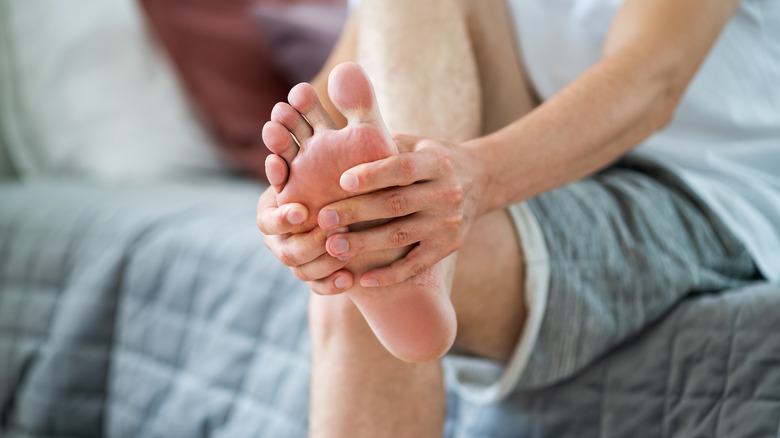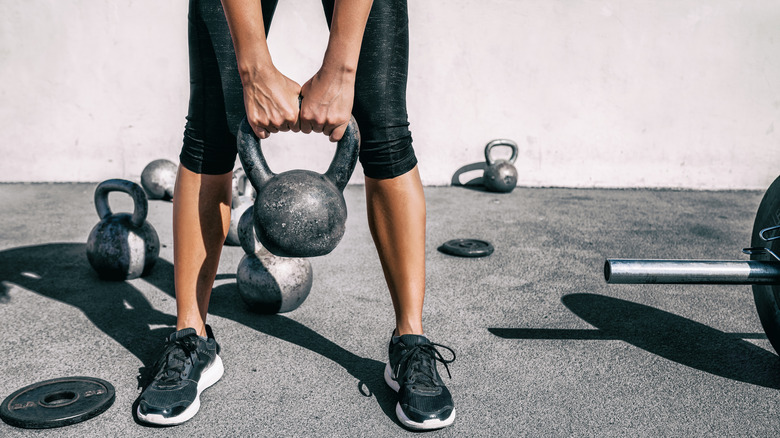Tips To Ease Pain From Work Outs If You Have Flat Feet
If you have flat feet, you may find certain workouts particularly painful. For instance, "Extended periods of standing, running, jumping, etc. tend to be more fatiguing for those with flat feet," certified personal trainer TJ Mentus tells Well + Good. While you don't want to avoid exercise, modifying exercises and strengthening your feet may help.
According to Mayo Clinic, flat feet are described as having undeveloped arches, which may force your feet to completely flatten and touch the floor. While commonly painless, this health condition is often hereditary, and can result from injuries, obesity, aging, or rheumatoid arthritis.
Exercise may aggravate foot pain because the foot rolls inward during activity, causing the ankle to collapse rather than lifting upwards. Also known as overpronation, this can affect your musculoskeletal system and lead to problems in the back, hips, and knees (per Well + Good).
One of the best ways to ease pain from working out is to strengthen your feet, suggests Cleveland Clinic. Begin with arch lifts, picking up marbles with your toes, and heel raises, as this will build up the deep intrinsic muscles of the foot. Talk to your podiatrist before you begin.
How to weight train if you have flat feet
When it comes to weight training and pain associated with flat feet, the best course of action is to lift lighter weights, Well + Good suggests. Believe it or not, the biomechanics of your flat feet may increase chances of injury, since it alters the biomechanics of your hips, lower back, and knees, points out certified personal trainer Matthew Morris to Well + Good. Lifting lighter is a great modification for strength training exercises because it prevents discomfort in the hips, knees, and back. Once the pain subsides and your foot strength increases, you're probably safe to add in heavier weights, shares Morris.
But if lifting weights is causing pain, skip weight-bearing movements until your foot improves (via Well + Good). Instead, try cycling, swimming, or another aerobic activity. But, if you find yourself in the middle, questioning whether you should use weights or no weights, try isolated movements. Often used during physical therapy, Verywell Fit shares that these movements target one muscle group at a time to stabilize and strengthen your body, and prevent pain. Otherwise, keep practicing foot strengthening exercises like tennis ball rolls, heel stretching, and calf raises (per Healthline).


